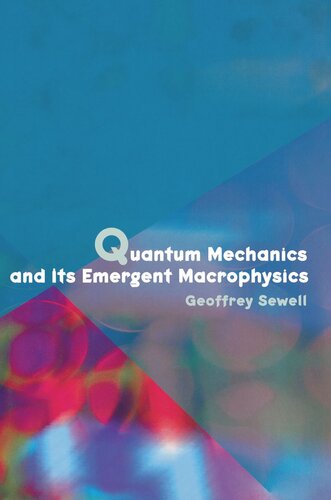

Most ebook files are in PDF format, so you can easily read them using various software such as Foxit Reader or directly on the Google Chrome browser.
Some ebook files are released by publishers in other formats such as .awz, .mobi, .epub, .fb2, etc. You may need to install specific software to read these formats on mobile/PC, such as Calibre.
Please read the tutorial at this link: https://ebookbell.com/faq
We offer FREE conversion to the popular formats you request; however, this may take some time. Therefore, right after payment, please email us, and we will try to provide the service as quickly as possible.
For some exceptional file formats or broken links (if any), please refrain from opening any disputes. Instead, email us first, and we will try to assist within a maximum of 6 hours.
EbookBell Team

5.0
88 reviewsThe quantum theory of macroscopic systems is a vast, ever-developing area of science that serves to relate the properties of complex physical objects to those of their constituent particles. Its essential challenge is that of finding the conceptual structures needed for the description of the various states of organization of many-particle quantum systems. In this book, Geoffrey Sewell provides a new approach to the subject, based on a "macrostatistical mechanics," which contrasts sharply with the standard microscopic treatments of many-body problems.
Sewell begins by presenting the operator algebraic framework for the theory. He then undertakes a macrostatistical treatment of both equilibrium and nonequilibrium thermodynamics, which yields a major new characterization of a complete set of thermodynamic variables and a nonlinear generalization of the Onsager theory. The remainder of the book focuses on ordered and chaotic structures that arise in some key areas of condensed matter physics. This includes a general derivation of superconductive electrodynamics from the assumptions of off-diagonal long-range order, gauge covariance, and thermodynamic stability, which avoids the enormous complications of the microscopic treatments. Sewell also unveils a theoretical framework for phase transitions far from thermal equilibrium. Throughout, the mathematics is kept clear without sacrificing rigor.
Representing a coherent approach to the vast problem of the emergence of macroscopic phenomena from quantum mechanics, this well-written book is addressed to physicists, mathematicians, and other scientists interested in quantum theory, statistical physics, thermodynamics, and general questions of order and chaos.